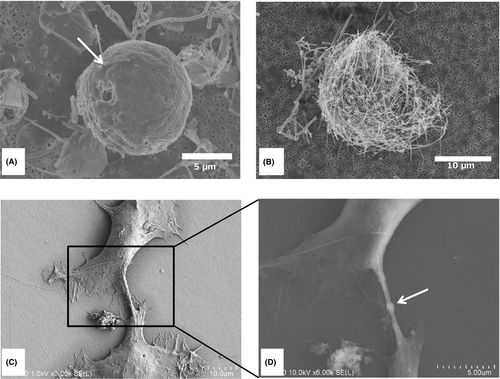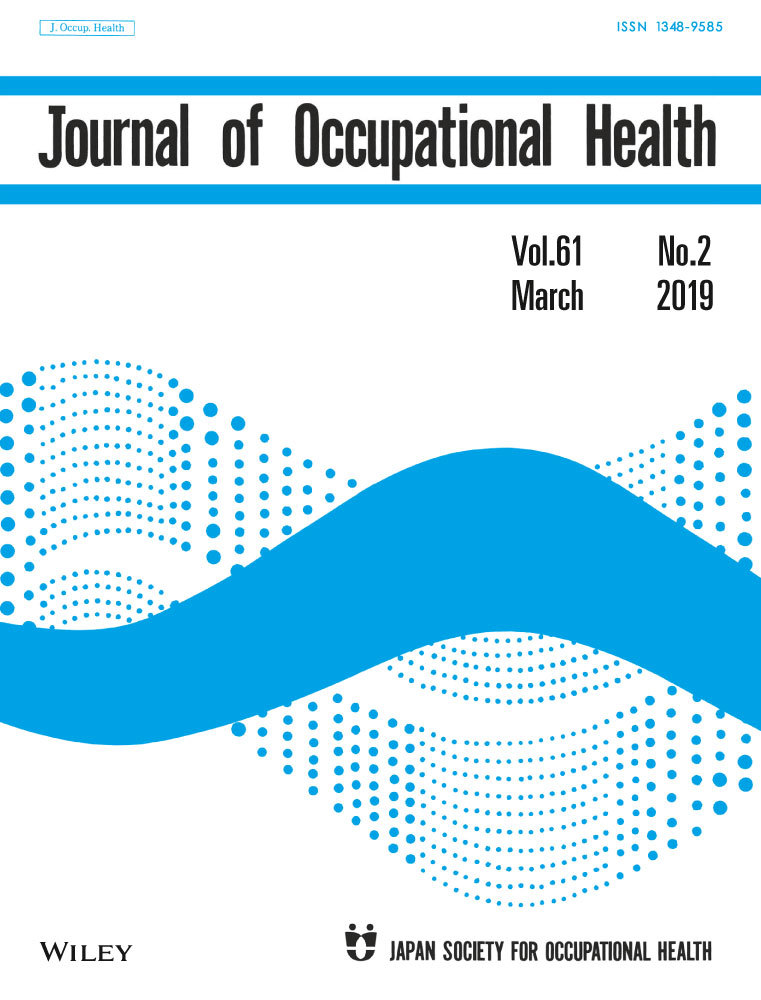Thinking on occupational exposure assessment of multi-walled carbon nanotube carcinogenicity
The Japan Bioassay Research Center conducted an inhalation carcinogenicity study of a straight type of MWCNT, MWNT-7 (Hodogaya Chemical Co., Ltd., Tokyo, Japan) using F344/DuCrlCrlj rats.1 200 Male and 200 female rats, 6 weeks old at the commencement of inhalation exposure, were exposed to MWNT-7 at the concentrations of 0, 0.02, 0.2, and 2 mg/m3 for 6 h/d, 5 d/wk, for 104 weeks. Increased incidences of bronchiolo-alveolar carcinoma in the lungs were observed in males and females exposed to 2 mg/m3 MWNT-7, and in males exposed to 0.2 mg/m3 MWNT-7. Additionally, the incidence of combined benign and malignant tumors was significantly increased in these groups.
The amount of MWNT-7 in the lung was retained in a concentration-dependent manner. Most MWNT-7 fibers were phagocytosed by alveolar macrophages and cocoon-like large aggregates of MWNT-7s were observed in the cytoplasm of macrophages (Figure 1A,B). Quantitative analysis of MWNT-7 in the lung showed that lung burdens at the level of 109 fibers were present in the 0.2 mg/m3groups and 1010 fibers in the 2 mg/m3 groups. In all exposed groups, the mean diameter of MWNT-7 fibers in the lung was 91.9-109.6 nm, and the mean length was 5.8-5.9 μm.

The “Stanton and Pott hypothesis,” also known as the fiber paradigm, that long fibers have strong carcinogenic potential is widely accepted in fiber carcinogenesis.1, 2 The mean length of MWNT-7 found in the lung of the rats in our study was in agreement with the fiber paradigm. When macrophages cannot phagocytize the fibers completely due to the fiber length and solidity, a state of incomplete phagocytosis is induced. It is believed that this state leads to damage of lung epithelial cells due to enhanced production of ROS and inflammatory cytokines as frustrated phagocytosis by macrophages attempting to enclose long fibers contributes to prolonged release of oxidants and cytokines. More importantly, we observed that alveolar macrophages, with phagocytosed MWNT-7s accumulated in the alveolar spaces in male and female rats exposed to MWNT-7 (Figure 1A). Digestion of these macrophages revealed cocoon-like masses of 10-20 µm in diameter formed by MWNT-7 fibers that had been internalized the macrophages. The fibers in these masses wound around each other to form a dense aggregate (Figure 1B). Also, in rats exposed to MWNT-7 at 2 mg/m3 an increase in 8-OHdG formation in the lung was observed (Kinoshita A, Kasai T, Umeda Y, Wanibuchi H, Fukushima S, unpublished data). Accordingly, the presence of large aggregates of MWNT-7 fibers internalized in alveolar macrophages is likely to be a source of ROS. Thus, even completely phagocytosed MWNT-7 fibers appeared to cause macrophages to produce ROS.
For risk assessment of genotoxic carcinogens, a linear non-threshold approach is used. In in vitro genotoxicity testing of MWNT-7, neither direct DNA damage nor mutagenicity was observed; however, chromosome aberrations (polyploid and aneuploidy induction) presumed to be caused by inhibition of cell division have been reported.2 We have also observed inhibition of cell division when CHL/IU cells were exposed to MWNT-7 fibers (Figure 1C,D). In addition, in an in vivo genotoxicity study of MWNT-7, DNA damage and mutagenicity were reported in the lung tissue of gptdelta mouse administered MWNT-7 intratracheally.2 The authors stated that there was a high possibility of secondary DNA damage and induction of mutation due to oxidative stress. Dr Yoshida has also proposed a chromosome tangling theory for MWCNT genotoxicity in this issue's Letter to the Editor. He notes that MWCNTs that remain in the cytoplasm and are not covered by membranes are expected to injure chromosomes during mitosis resulting in chromosomal instability. This aberrant microenvironment, rich in ROS and subsequently oxidative DNA damage, suggests a multifactorial mechanism of disease progression including epigenetic modifications and loss of tumor suppressor genes, for example, p16 and p19. Thus, oxidant stress in inflammatory lesions induced by long MWCNT fibers, results in epigenetic modification and chromosomal alterations, adversely affecting tumor suppressor genes. Taken together, MWNT-7 can be classified as a chemical substance that exhibits genotoxicity by a secondary mechanism, and consequently, falls into the category of carcinogens with carcinogenic thresholds.3, 4 Therefore, it is possible to manage MWNT-7 with realistic and reasonable precautions.
In our carcinogenic studies,1 the carcinogenic no-observed-adverse-effect-level (NOAEL) of MWCNT (MWNT-7) was determined to be 0.02 mg/m3, with lung cancer induction in male rats as the endpoint. Using the NOAEL-based approach, we calculated occupational exposure limit (OEL) as 0.15 µg/m3 (formula: 0.02 mg/m3 × 1/100 × 6/8 h/d) for a human worker, based on human equivalent working time concentration, with a total uncertainty factor of 100 (species differences 10, severity of toxicity [ie, carcinogenic effect] 10, individual differences in susceptibility 1).5
We believe that experimental results from our long-term inhalation exposure study of MWNT-7 using rats will provide a scientific basis for risk reduction in the workplace, and that the OEL will provide important information for preventing adverse health effects on workers by occupational exposure.
DISCLOSURE
Approval of the research protocol: N/A. Informed consent: N/A. Registry and the registration no. of the study/trial: N/A. Animal studies: N/A. Conflict of interest: There are no conflicts of interest for this article.




